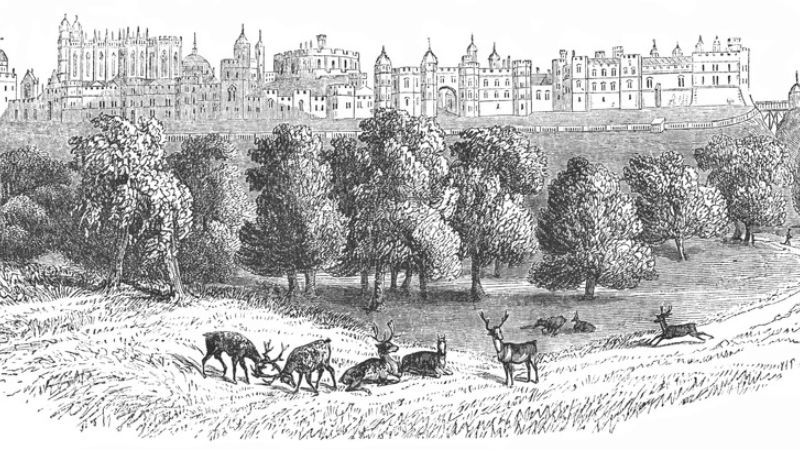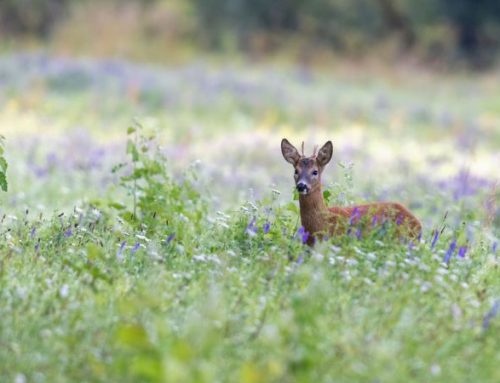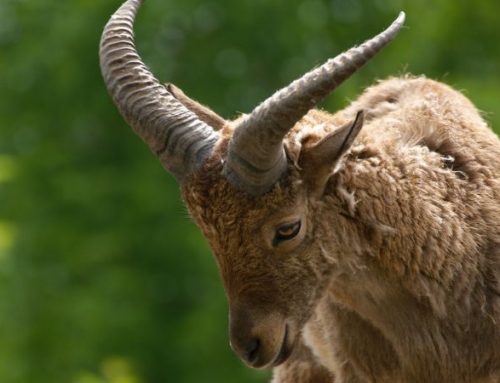In the heart of old Europe, hidden among ancient forests, perched castles, and misty valleys, lie places that have shaped the history of hunting: the ancient noble reserves.
These lands, once accessible only to kings, dukes, emperors, and aristocrats, preserve centuries-old traditions, a rarefied atmosphere, and fascinating stories of legendary hunts, solemn rituals, and deep bonds between man, dog, and game. Today, many of these reserves have become destinations for selective hunting, open to those who appreciate the value of an ancient practice in a setting of natural beauty and authentic hunting culture.
The Reserve as a Symbol of Power
In the Middle Ages, and even more so during the Renaissance, owning a hunting reserve was a tangible sign of power and prestige. The great European noble houses would designate forests, moors, and lakes exclusively for personal hunting or grand hunting expeditions, attended by noble guests, ambassadors, and political allies. In France, England, Austria, and the German kingdoms, hunting was a true form of diplomacy and a solemn moment in courtly life.
Game was managed with strict precision: gamekeepers, pheasant breeders, trapping experts, and beaters worked year-round to ensure the abundance and variety of species. The reserves were not merely natural spaces; they were theatrical backdrops for a society that showcased its supremacy through the order and aesthetics of the hunting landscape.
Fontainebleau: The Wild Heart of the Kings of France
The Fontainebleau Forest, southeast of Paris, is perhaps the most famous of Europe’s ancient noble reserves. The kings of France used it for centuries as a place of leisure and hunting, particularly for deer, fallow deer, and wild boar. Francis I, a great hunting enthusiast, had the sumptuous château built here, which still dominates the landscape today.
Game was meticulously managed: gamekeepers, pheasant breeders, trapping experts, and beaters worked year-round to ensure the abundance and diversity of species. These reserves were not merely natural spaces; they were grand stages for a society that asserted its supremacy through the order and aesthetics of the hunting landscape.
Fontainebleau: The Wild Heart of the Kings of France
The Fontainebleau Forest, southeast of Paris, is perhaps the most famous of Europe’s ancient noble reserves. For centuries, the kings of France used it as a place of leisure and hunting, particularly for deer, fallow deer, and wild boar. Francis I, an avid hunter, commissioned the construction of the sumptuous château that still dominates the landscape today.
Here, red deer hunting is celebrated as both an art and a tradition: in autumn, the stag’s roar echoes across the moors, and hunters don tweed and tartan just as they did in the past. Prince Philip, consort of Queen Elizabeth II, was a passionate stalker and considered Balmoral his hunting paradise.
Today, those fortunate enough to hunt at Balmoral experience something truly unique—not only due to the quality of the game but also because of the breathtaking landscape, the vast silence, and the deeply rooted British hunting traditions that permeate every detail.
The Imperial Reserves of Austria-Hungary
In the Habsburg Empire, hunting was an imperial affair. Emperor Franz Joseph spent long periods in his alpine reserves, hunting ibex and red deer with an almost ascetic devotion. Among the most famous was the Bad Ischl reserve in the Salzkammergut, home to the Kaiservilla, the imperial family’s summer residence.
It is said that the emperor personally recorded every animal he hunted with obsessive precision and that he preferred to hunt in solitude, accompanied only by a small, trusted entourage. His passion for hunting was so intense that it even influenced the kingdom’s politics, with certain times of the year deemed “off-limits” for state affairs, as they were reserved for the hunting season.
In Hungary, other great noble reserves emerged near the Danube and across the northern plains, where hunting was practiced with Hungarian vizslas—now considered one of the noblest breeds for pointing game.
Bohemia and Moravia: Hunting Among Castles
The lands of what is now the Czech Republic were, under Habsburg rule and German aristocracy, a mosaic of hunting estates. The castles of Konopiště, Karlštejn, and Lednice hosted legendary hunts. Archduke Franz Ferdinand of Austria, heir to the throne and victim of the Sarajevo assassination, was an obsessive hunter—it is said that he shot more than 250,000 animals in his lifetime and that his trophy collections remain among the most impressive in the world today.
These reserves were distinguished by an abundance of game, meticulous management, and a hunting style rooted in precision and efficiency—a true hunting academy for the elite of Central Europe.
The Timeless Charm of the Maremma
Even in Italy, some noble hunting reserves have left a profound mark on the country’s hunting culture. The Maremma Toscana, with its historic estates and farmhouses scattered among rolling hills, has been an elite hunting ground for centuries. Noble Florentine and Roman families owned vast estates, crossed by herds of livestock and teeming with wild boar, roe deer, and foxes.
Among them, La Marsiliana stands out—a historic estate owned by the Corsini family, located in the municipality of Manciano. Acquired in 1759, La Marsiliana is an extraordinary example of territorial transformation: from a swampy area to a refined agricultural and hunting estate, where hunting merges with the beauty of the Tuscan coast and an excellent winemaking tradition. Its rolling hills, well-kept woodlands, and the salty breeze from the sea create the perfect setting for wild boar hunts and an authentic connection with nature.
The Renacci estate, also owned by the Corsini family and located south of Florence, retains a deep hunting soul. It became part of the family’s heritage in 1834 through the marriage of Eleonora Rinuccini and Neri Corsini. Today, Renacci remains one of the estates that best preserves the charm of the Tuscan rural landscape, offering refined hunting and sporting experiences in a setting of great historical and natural value.
Hunting in the Mediterranean scrubland has always had an epic allure: horseback chases, packs of hounds, wild boar drives with arquebuses and flintlock rifles. Some estates still keep these traditions alive today, integrating them with modern wildlife management practices.
Legends and Anecdotes
Many of these reserves are surrounded by legends. One story tells of a German duke who got lost in a forest while chasing a white stag—an ancient symbol of purity and redemption. When he finally caught up with it, the stag vanished into thin air, leaving behind a glowing cross between the branches. From that moment on, the duke renounced his worldly life, became a monk, and donated the reserve to the church.
Another tale speaks of Emperor Rudolf II’s imperial falcon, which escaped during a hunt and returned two years later wearing a ring from Spain around its neck. Perhaps mere fabrications, but these stories enhance the mystery and allure of these legendary hunting grounds.
Tyrants and Satraps at the Hunt
Throughout history, hunting was not only the privilege of enlightened nobles and refined sovereigns. Some of the most controversial figures of the 20th century used hunting reserves as symbols of personal power, territorial control, and domination. For them, hunting was not merely a pastime but a staged demonstration of supremacy.
One of the most striking examples is Nicolae Ceaușescu, the communist dictator of Romania, who was an avid hunter of deer and wild boar. He had vast, entirely restricted reserves, managed by an army of gamekeepers, biologists, and trophy specialists. It is estimated that he personally shot over 400 brown bears, often pre-selected for their size and grandeur. Everything was meticulously orchestrated to ensure him spectacular trophies—an elaborate theater of hunting power. Today, some of those reserves, such as those in the Carpathians, have reopened as selective hunting grounds accessible to European hunters.
Similarly, Hermann Göring, a high-ranking Nazi official and passionate hunter, turned the Rominten Reserve (in what is now Kaliningrad) into his personal domain. He took pleasure in wearing Bavarian-style hunting uniforms and collecting trophies as symbols of his power. His highly publicized passion for hunting was part of his self-styled image as the “lord of the forest,” a guardian and master of Germany’s natural world.
In Yugoslavia, Marshal Tito turned hunting into a ritual of personal affirmation. One of his favorite hunting reserves was Kočevje in Slovenia, a vast and remote area of dense forests where he pursued brown bears, deer, and other wild game. Even today, his historic Ischerbach hunting lodge remains perfectly preserved, a relic of an era when hunting served as both a political spectacle and a display of power. Among the distinguished guests who joined him on these expeditions were Haile Selassie, Leonid Brezhnev, and King Hussein of Jordan. Hunting, in this context, became a diplomatic language, a way to impress and strengthen alliances.
In Africa, leaders such as Mobutu Sese Seko and Idi Amin Dada carefully crafted their public images as great hunters, leveraging colonial-era hunting iconography to reinforce their authority. However, many of these hunts were little more than staged spectacles, with no regard for sustainability or wildlife management.
While these examples remain controversial, they underscore how hunting has historically been linked to power and the symbolic representation of authority. However, today, many former militarized and exclusive hunting reserves have been repurposed for ethical and sustainable use, marking a crucial shift from propaganda to conservation.
Noble Hunting Reserves Today
Today, many of these historic hunting reserves have been transformed into national parks, private hunting reserves, or eco-hunting estates managed with a focus on sustainability. They now offer authentic experiences, often combining hunting with stays in castles, agritourism lodges, or refined hunting retreats, alongside local culinary tastings and moments of relaxation.
This evolution reflects a broader trend: from hunting as an elitist power display to a practice that respects wildlife conservation principles, ensuring that the rich heritage of these landscapes endures for future generations.
When conducted with ethics and careful selection, modern hunting aligns seamlessly with the legacy of these lands. Taking part in a hunt within an ancient reserve means connecting with history, with a carefully managed and protected environment, and with a way of life that values respect, aesthetics, and tradition.
Why Choose Them Today
Hunting in a noble reserve offers a complete experience, where the act of hunting itself is just one part of a much broader, richer mosaic. It means immersing oneself in places where time slows down, where every detail—from the light filtering through the trees to the rustling of leaves—feels more vivid, more profound.
It is an opportunity to savor the elegance of tradition, rediscover the beauty of slowness, and honor the ancient bond between man and nature.
These historic noble reserves are not just hunting grounds; they are treasures of culture, memory, and beauty. Today, more than ever, they represent a choice for those who seek to experience hunting as an art, not just a technique.












